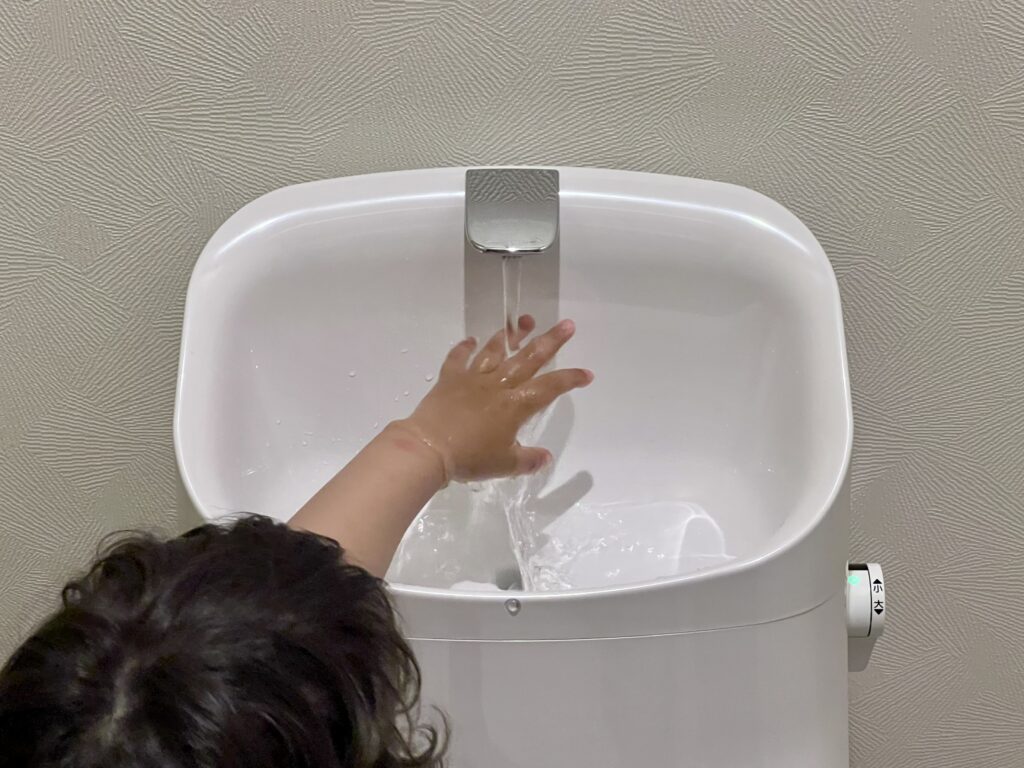In Japan, the toilet is often found in a little room where nothing but the actual toilet can be found; I guess the space saving reason explains a big part of why often there is no separate basin to wash hands. The other reason I can think of is to save water – while normally flushing the toilet means the water tank is filled by a pipe connected directly to the tank, this is not the case in many small toilet rooms found in Japanese homes.
On the second floor we have a bathroom (with a normal toilet with waterpipe connected to watertank); on the first floor we have a small toilet room next to the entrance. In the entrance we have a wash basin to be able to easily wash our hands when coming home, but in the toilet room however there is no traditional wash basin. Instead, there is a small one built into the toilet itself, using the water that is filling up the tank as water to wash hands. I saw this kind of toilet the first time many years ago when I visited Japan, and I remember thinking that it was a kind of strange impractical hardly beautiful invention. Now I think it is the coolest thing, especially so in these times when the environmental aspects of living are becoming even more present in every day life.
Finding our toilet attractive does apparently our son as well – this morning I looked away for a few seconds when doing the dishes and suddenly our son was gone. Where did I find him? In the toilet room of course. The door from the kitchen was a bit ajar and he took the chance to sneak away, flush the toilet and play with the running water. So in our family the water saving aspects of this toilet has yet to show their full potential, but until then, I will just enjoy the esthetics of this coolest of inventions. (And you can catch up on part 1 of the toilet blog post series here.)

